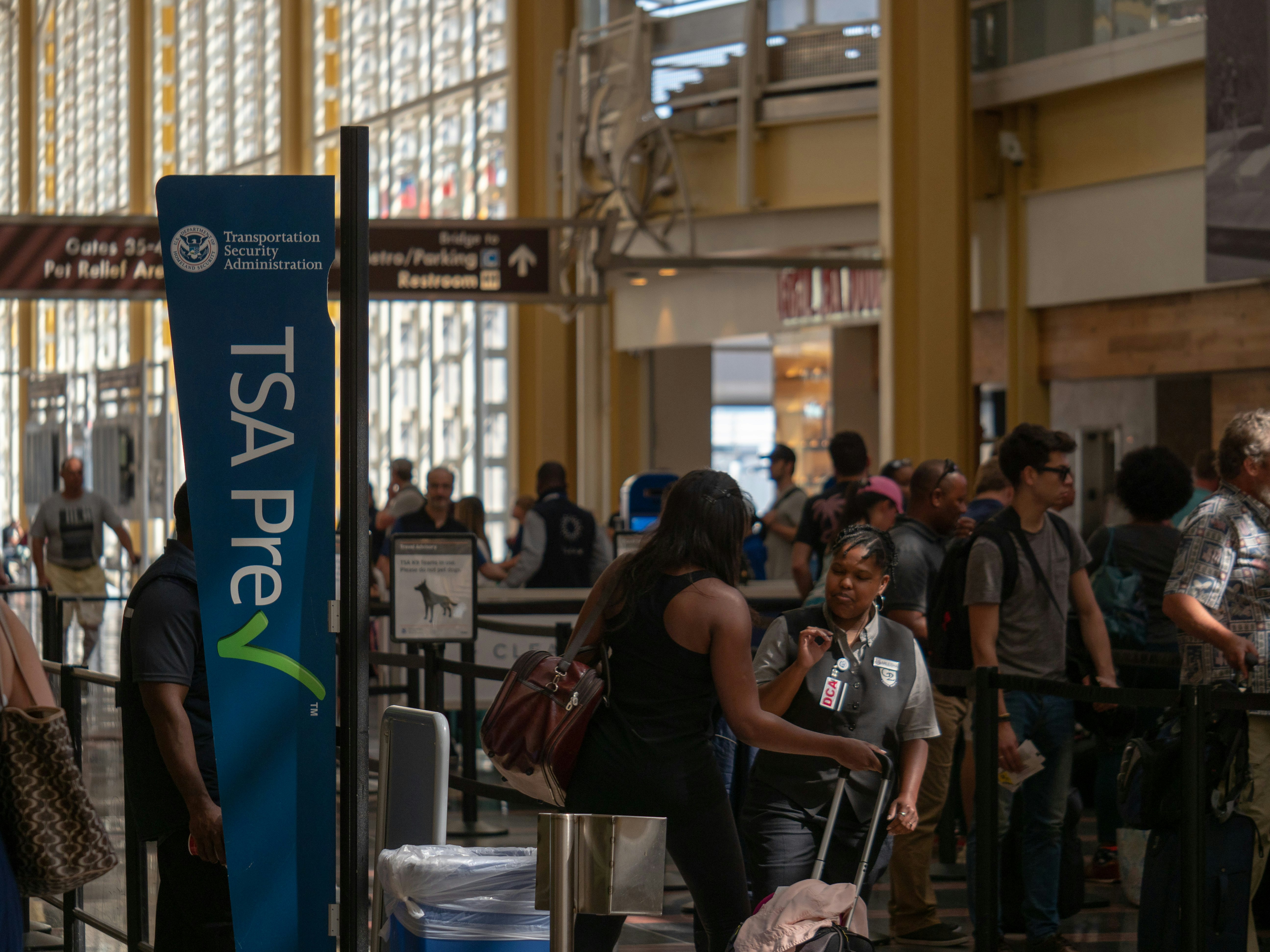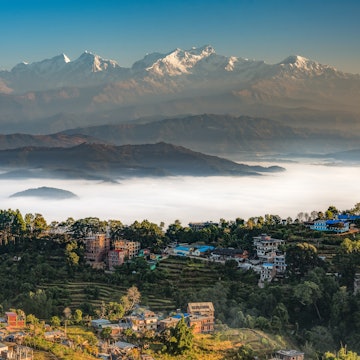

Passport control at New York City's JFK Airport. 4kclips/Shutterstock
After a recent international flight, I exited New York City's JFK Airport within 20 minutes of landing – and I don’t even have Global Entry.
Was it magic? It certainly felt magical. But no, it was none other than Mobile Passport Control (MPC). You’ve most likely seen signs advertising MPC on the journey from your gate to passport control but have felt too rushed to look it up. MPC is a free app (available on both Apple and Android) that seamlessly slips you past the eternal snake of an immigration line and into a separate, far shorter queue. Here’s everything you need to know about using Mobile Passport Control.
Who’s eligible for Mobile Passport Control?
A few groups of people can take advantage of MPC. The most obvious group is US citizens, but MPC is also available to US lawful permanent residents (otherwise known as nonnative US residents with green cards), Canadians traveling to the US for business or tourism (on a B-1 or B-2 visa) and passport holders of Visa Waiver Program countries with an approved Electronic System for Travel Authorization.

How does Mobile Passport Control work?
Once you arrive at passport control, the entire process normally takes just a couple of minutes. The most time you'll spend on the MPC app is when you initially set up your traveler profile by adding your passport details (either by scanning your passport or entering the data manually) and other personal information. Your traveler profile is saved in the app for future use. Creating a profile is fairly simple, and the app guides you through each step.
I recommend creating your traveler profile before you board your flight into the US. That way, once you land, all you need to do is check in on MPC. The app can store your profile along with profiles for up to 11 other people. So if you’re traveling with your family, for example, you can check in everyone from one MPC app. Select the profiles for your party, agree to the security notice, answer six declaration-related questions (including “What’s the value of any goods you’re bringing into the US?” and “Have you been on a farm recently?”) and, if you’re Canadian, provide your purpose of travel. You can start filling this out before you land but don’t submit it until you’ve arrived at the airport – responses expire after a few hours. After you submit, you have to take a selfie of just your face, which will not feel remotely glamorous after a long-haul international flight. Then you’re guided to a confirmation page, which you will need later.
Each traveler profile you’ve selected needs to be checked in like this. When it’s just me, it takes maybe a minute. I usually do it from my seat on the plane while we taxi to the gate.
After deboarding, follow the signs to passport control along with everyone else until you reach the designated MPC lane. Show your MPC app’s confirmation page to the agent, and they’ll motion you to hop into the dramatically shorter line to a US Customs and Border Protection (CBP) booth. Hand your passport to the CBP agent, who may ask where you’ve just flown in from or if you have anything to declare. Then it’s off to your next destination, wherever that may be!
Which airports offer Mobile Passport Control?
Most major international US airports offer MPC lanes, but you can check if you’re headed to an eligible airport on the CBP website. This list also includes four US seaports and 15 foreign airports with preclearance. At preclearance locations, travelers with MPC can complete the MPC form and present their passport and the app’s confirmation page to an agent before boarding their flight to the US. Upon landing, you can then bypass passport control and head to your connecting flight or final destination.

What's the difference between Mobile Passport Control and Global Entry?
If you’re a US citizen who has Global Entry, I highly encourage you to take advantage of that perk over MPC. After all, you’ve already spent US$120 and endured the time-consuming application process. However, if you’re struggling to choose between Global Entry and MPC, here’s why I, a full-time travel editor, have spared myself the US$120.
To really drive it home, MPC is free. Zilch. Nada. Not only is it a low lift for your wallet, but you also don’t need to fill out a lengthy application, carve out time for an in-person interview or wait for the results of a background check – all of which are required for Global Entry. All you have to do is download an app, create a profile and fill out a quick form.
The primary drawback of MPC is that not all US airports offer it – yet. However, more US airports are rolling out the program. You also most likely don’t need to speak to a CBP officer if you have Global Entry, though during my most recent experience with MPC, that conversation lasted about 10 seconds. Occasionally, I’ve landed at a time of day when the airport is so empty that the MPC line is closed, and MPC users are filed into the same line as everyone else. That was also a very brief wait.
Another main difference between the two programs is that Global Entry includes TSA Precheck benefits, which expedite travelers through security lines in US airports. Since I already have TSA Precheck, I don't feel the need to pay extra for Global Entry. All in all, MPC is a fantastic, zero-cost option for travelers in the know who favor convenience.
















